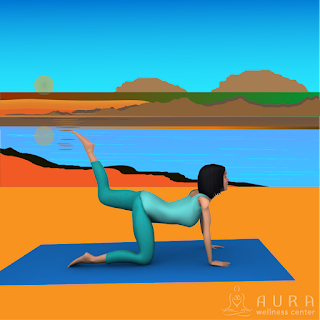By Faye Martins
Although there are a variety of things that yoga teachers can do to maximize their ability to generate income and help others, utilizing continuing education services can be particularly advantageous. This is the case for several reasons, including the fact that continuing education services help yoga teachers stay up to date with respect to contemporary practices, making them more valuable to prospective clients. To learn more about options with respect to continuing education for yoga teachers, review the brief outline provided below.
Continuing Education-A Brief Overview
Although defined broadly, continuing education is basically a process that involves attaining formal knowledge regarding a subject after already having completed basic coursework or educational training. An example of this would be a yoga teacher attaining certification to work within her field, and then going on to complete a six-week training course that offers instruction regarding how to administer one-on-one assistance.
Continuing Education-A Brief Overview
Although defined broadly, continuing education is basically a process that involves attaining formal knowledge regarding a subject after already having completed basic coursework or educational training. An example of this would be a yoga teacher attaining certification to work within her field, and then going on to complete a six-week training course that offers instruction regarding how to administer one-on-one assistance.
Continuing Education Classes For Yoga Teachers: Options
As stated earlier, pursuing continuing education classes is an incredibly beneficial thing to do. In recognizing this principle, yoga teachers who want to excel within their careers may wonder which types of continuing education classes will be most appropriate for them. The answer to this question will vary based on a plethora of factors, including whether your goal is to earn a higher salary, gain a promotion, or be of greater benefit to a specific clientele. Irrespective of what your professional objectives are, you may benefit from pursuing any of the following continuing education classes:
Prenatal Yoga Teacher Training
Yoga for Kids Teacher Training
Restorative Yoga Teacher Training
Urban Zen Integrative Therapy Training
Mindful Fitness: Barworks, Sculptworks
More Continuing Education Options
If you are a yoga teacher who wants to generate greater wealth and attain more clients, you should know that one great continuing education option is to study for a personal trainer certification. These certifications are valuable for numerous reasons, including the fact that they typically provide you with a great deal of knowledge regarding a plethora of fitness-related topics such as the psychology of exercise, nutrition, and anatomy. Moreover, personal trainers earn an average annual salary of $31,720, and this salary can grow steadily as one attains an ever-widening clientele base.
Yet another continuing education option that yoga teachers may want to consider is attaining a group fitness instructor certification. Like the personal training certification, this opportunity is valuable because it provides you with a holistic understanding of many important fitness-related topics. Additionally, attaining a group fitness instructor certification for an exercise program such as step aerobics can increase a yoga teacher's social network, thereby providing him or her with more clients.
Choosing the Right Continuing Education Program
Once a yoga teacher decides that pursuing continuing education is the most appropriate and advantageous thing to do, the next step is to find the right program to enroll in. There are several factors that one must consider in order to make the best decision, and the primary factors include costs, subject matter, and company accreditation.
Conclusion
Yoga teachers who have given consideration to the pursuit of a continuing education program should know that doing so can be both personally and professionally rewarding. By reviewing the information found above, yoga teachers can make prudent educational decisions which help them make the most of their professional careers.
Faye Martins, is a Yoga teacher and a graduate of the Yoga teacher training program at: Aura Wellness Center in, Attleboro, MA.
%2Bcopy.png)








